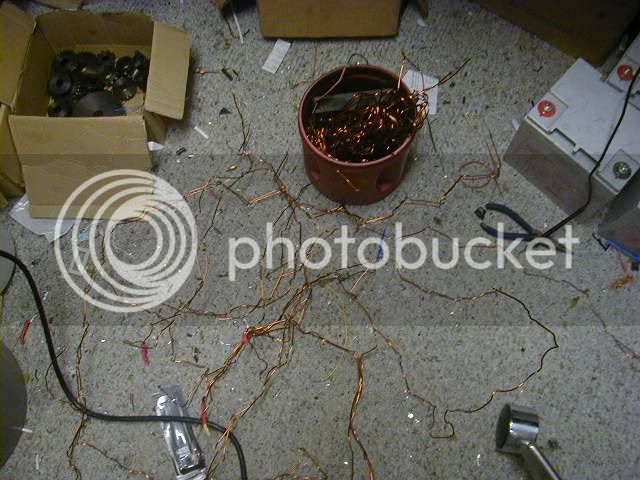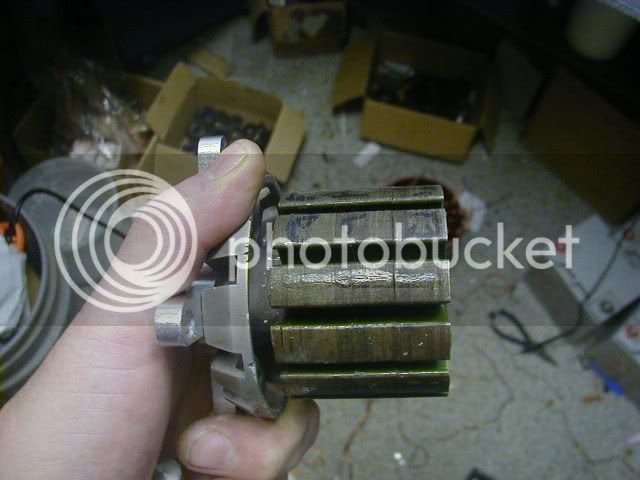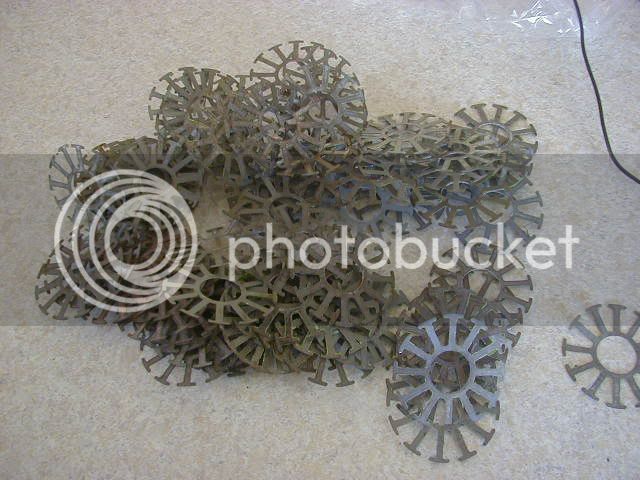Thud
1 MW
Another report....
This re-wound motor is drawing 21 amps no-load on 44 volts...its got a ton of power but the controllers get HOT in 45 seconds & the Motor is hot also....
looking like another fail from my bench....no way this thing will last as it currently configured. I am afraid to hook my HV160 to it.....
any one care to speculate?
edit: I just sent an e-rant apology to AJ for getting his hopes up...I am getting tired of failure when attempting to spin outrunners with infineons....I am looking for more than current tech will allow, apparently...add that all the other parts of the system are just sh_t...(I have 2 more Hall throttles sitting on the bench that quit working that have never been on a bike), just pure junk.
All I want is a reliable 5000-watts for 30 minutes. I am totally unable to configure that with off-the-shelf parts in my price range...I can burst more power currently (hey a pun) but nothing that would compare to a real powered bike as of yet. If anyone thinks they have the answer I am all ears. Or better yet- build it & prove that it can be done with a video. Right now I will be betting on an overvolted hub motored bike to make the 12 miles of the death race...Or a $8000 budget on an RC build.
A pair of Astro's running on Castle controllers would prolly make the grade, but for that amount of money I can build 5 gasoline burning motor bikes that would withstand running at 100% for hours on end...what a frustration....
This re-wound motor is drawing 21 amps no-load on 44 volts...its got a ton of power but the controllers get HOT in 45 seconds & the Motor is hot also....
looking like another fail from my bench....no way this thing will last as it currently configured. I am afraid to hook my HV160 to it.....
any one care to speculate?
edit: I just sent an e-rant apology to AJ for getting his hopes up...I am getting tired of failure when attempting to spin outrunners with infineons....I am looking for more than current tech will allow, apparently...add that all the other parts of the system are just sh_t...(I have 2 more Hall throttles sitting on the bench that quit working that have never been on a bike), just pure junk.
All I want is a reliable 5000-watts for 30 minutes. I am totally unable to configure that with off-the-shelf parts in my price range...I can burst more power currently (hey a pun) but nothing that would compare to a real powered bike as of yet. If anyone thinks they have the answer I am all ears. Or better yet- build it & prove that it can be done with a video. Right now I will be betting on an overvolted hub motored bike to make the 12 miles of the death race...Or a $8000 budget on an RC build.
A pair of Astro's running on Castle controllers would prolly make the grade, but for that amount of money I can build 5 gasoline burning motor bikes that would withstand running at 100% for hours on end...what a frustration....




